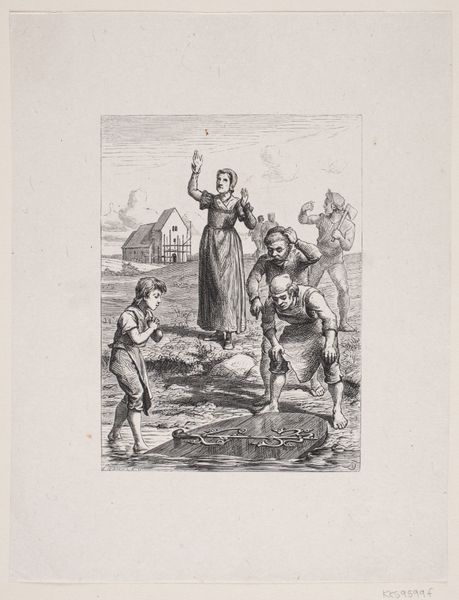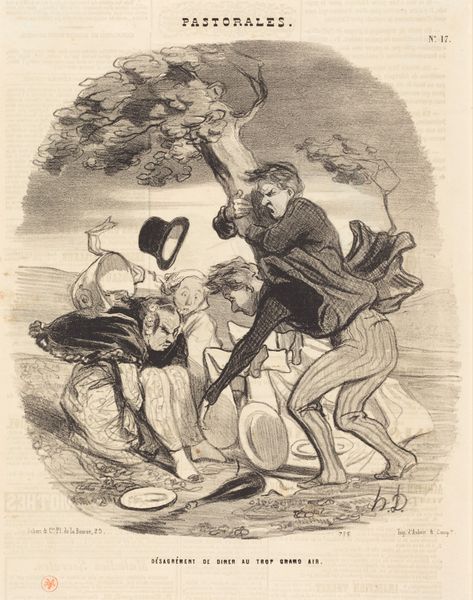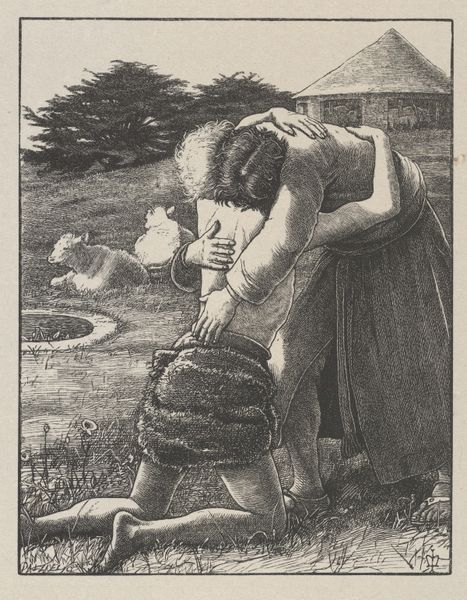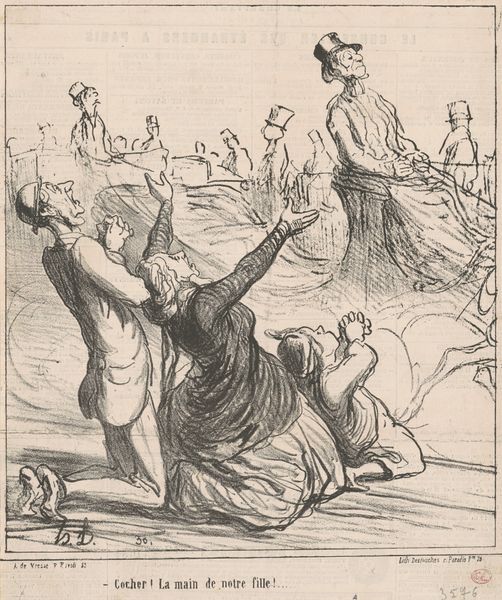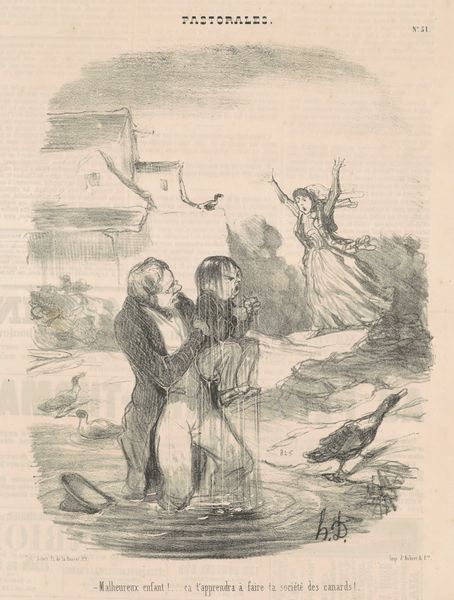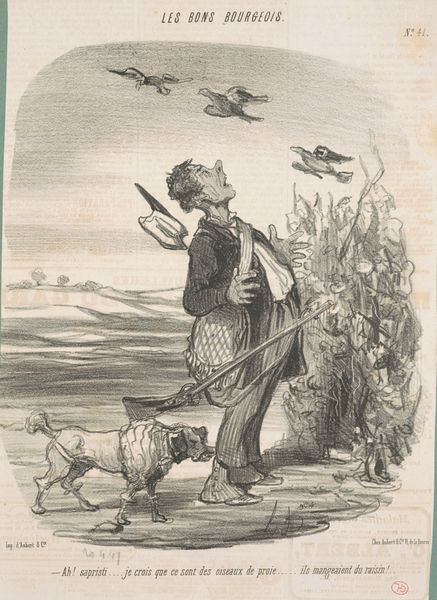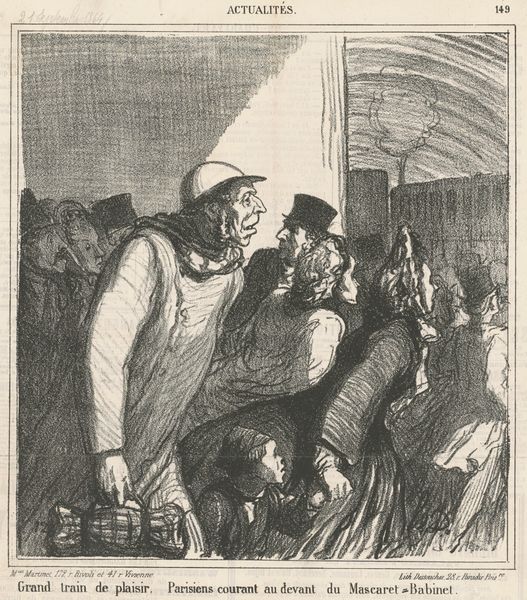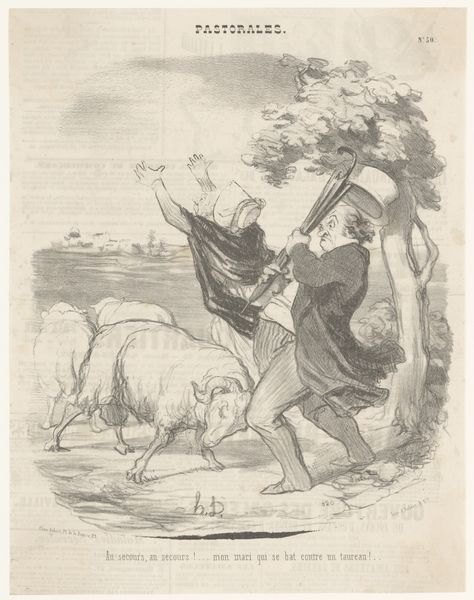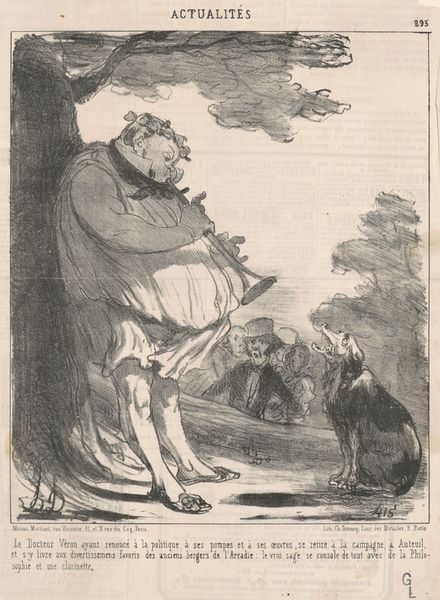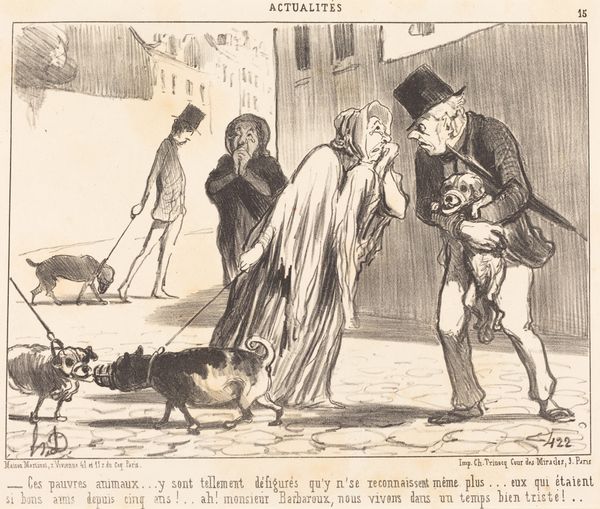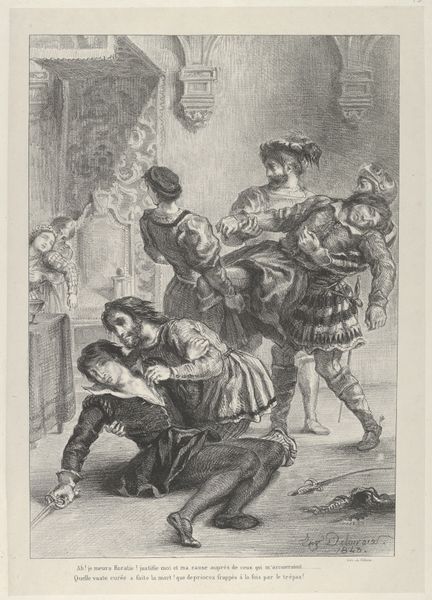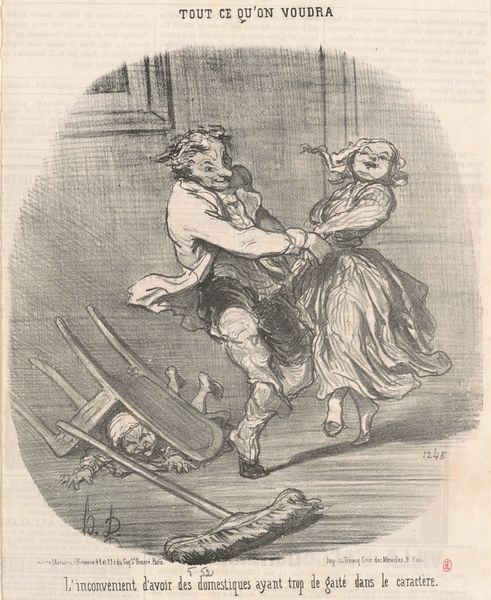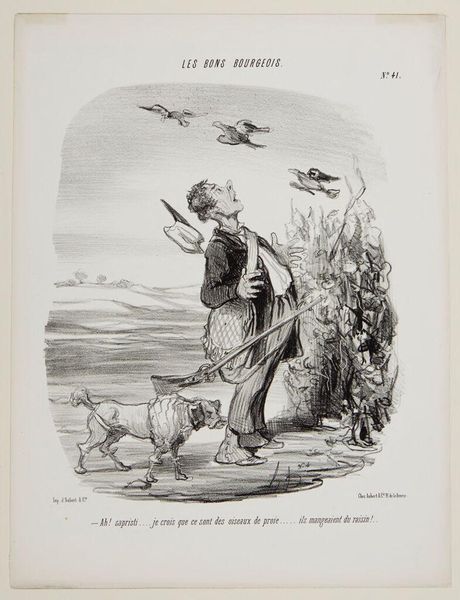
Aux petits des oisons, ils donnent la mangeaille ... c. 19th century
0:00
0:00
drawing, lithograph, print, ink, pen
#
drawing
#
comic strip sketch
#
quirky sketch
#
lithograph
# print
#
caricature
#
cartoon sketch
#
personal sketchbook
#
ink
#
idea generation sketch
#
sketchwork
#
romanticism
#
pen-ink sketch
#
sketchbook drawing
#
pen
#
genre-painting
#
storyboard and sketchbook work
#
sketchbook art
Copyright: National Gallery of Art: CC0 1.0
Curator: This is a lithograph by Honoré Daumier from around the 19th century titled "Aux petits des oisons, ils donnent la mangeaille...". It depicts a domestic scene, seemingly on a farm. Editor: My immediate reaction is the sheer busyness of the composition. The flurry of activity is chaotic, almost overwhelming. There's a distinct lack of stillness here, and I can almost hear the cacophony of squawks and flapping. The ink looks so tactile! Curator: Daumier was known for his caricatures and social commentary. Examining the role of art in engaging public opinion, lithography allowed for relatively cheap mass production, enabling his work to reach a wide audience in periodicals. The cartoon strips such as these allowed insight into social standards. Editor: That makes sense given the subject matter. Looking closer, it’s all about labor, isn't it? The farmer is actively engaged, feeding, while the woman stands watch over a young child—a material division of domestic and agricultural roles portrayed within the accessible format afforded by printmaking. This tells of the lives of average people. Curator: Exactly! The image comments on daily life. Though seemingly lighthearted, these illustrations often subtly critique the social and political climate of the time, focusing on how class, property, labor, and gender shaped the visual and conceptual vocabulary around the people of Paris. Editor: And the medium itself adds another layer. Lithography is a pretty direct process involving physical engagement of stone and grease, in this case using drawing to engage in wider discussions of consumption, craft, and production. What stories this printing would tell of daily labour in Paris! Curator: Considering Daumier's history, his art underscores the complex relationship between artistic expression and social responsibility. He leveraged art’s social impact in making political arguments through imagery during a turbulent period of French history. Editor: Thinking about the drawing, the rapid lines create an energy, suggesting quickness in movement, the physical nature of the farm at hand. It underscores how even in reproduction, the physical engagement and social role of material labor carries great significance. It leaves one with questions about our current modes of creation. Curator: Indeed. By studying such works, we can better understand the relationship between imagery and the public sphere in 19th-century France. Editor: Absolutely. And seeing how social relations can influence—and are reflected—in artmaking provides tangible connections to labour, material and social awareness for both current artmaking and criticism.
Comments
No comments
Be the first to comment and join the conversation on the ultimate creative platform.
